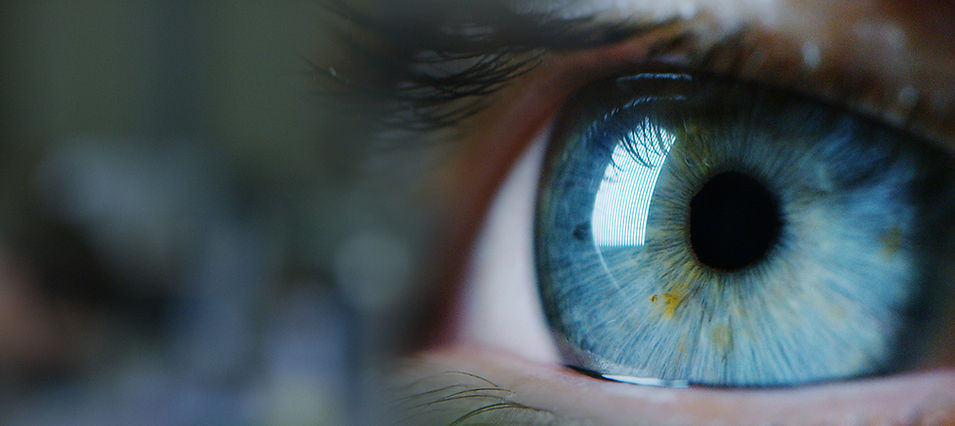
CONDITION
Glaucoma
Glaucoma is a group of eye conditions that can damage the optic nerve, the part of the eye responsible for transmitting visual information to the brain. It often develops slowly and without noticeable symptoms in its early stages, and if left untreated, it can lead to permanent vision loss and blindness. There are several types of glaucoma, but the two most common forms are Open-Angle Glaucoma and Angle-Closure Glaucoma
Open-Angle Glaucoma (OAG)
Open-Angle Glaucoma (OAG) is the most common type and typically progresses slowly. It occurs when the drainage channels within the eye become less efficient over time, leading to increased eye pressure. It is usually not associated with any pain or visual symptoms and can only be discovered during routine sight tests with local optometrists
Risk factors
Risk factors for developing glaucoma include older age, particularly after the age of 60, family history, with higher risks if other family members are involved, African-Carribean individuals have a higher risk, previous eye injuries, thin corneas, or other eye conditions can increase the risk.
Angle-Closure Glaucoma (ACG)
Angle-Closure Glaucoma (ACG) is less common but can be more severe. It happens when the drainage angle of the eye becomes blocked or completely closed, usually causing a rapid increase in eye pressure, commonly associated with symptoms like pain around the eyes, headaches and blurred vision with halos around the lights.
Signs and Symptoms
Signs and Symptoms can be minimal in its early stages, but as the condition progresses, patients may experience gradual loss of peripheral (side) vision, blurred vision or difficulty focusing, halos around lights, eye pain and headache.
TREATMENT
Glaucoma
The goal of glaucoma treatment is to lower eye pressure and prevent further damage to the optic nerve. Treatment options may include:
Medications
Medications like eye drops, tablets, or other modalities to reduce eye pressure. There are currently 5 classes of drops that are used in treating glaucoma, with two new classes being introduced soon, but most doctors typically offer up to 4 classes at a time To minimise ocular surface toxicity that can ensue with long term use of drops, especially those containing BAK preservatives, preservative-free formulations are available.
Laser Treatment
Selective Laser Trabeculoplasty (SLT)
Selective Laser Trabeculoplasty (SLT) is predominantly offered to OAG patients, and is now recommended as the first line treatment.
YAG laser peripheral iridotomy (LPI)
YAG laser peripheral iridotomy (LPI) is offered predominantly to ACG patients, as well as patients with pigment dispersion syndrome. It improves the distribution of fluid in the eye and can help normalise eye pressure in many cases.
Cyclo-diode laser | Laser treatment for glaucoma
Cyclo-diode laser can be offered to selective cases, particularly ones with advanced disease and high eye pressure. Micro-pulse laser treatment (MLT) is a newer modality that can be offered to more patients with a wider scope of indications.


TREATMENT
Laser Treatment for Glaucoma
Surgery
Surgery is needed in some cases, mainly to improve or create a new drainage pathway for eye fluid.
Minimally Invasive Glaucoma Surgery
Minimally Invasive Glaucoma Surgery (MIGS) is a relatively new class of treatment modalities that is usually done at the same time of cataract surgery, under local anaesthesia, with minimal impact on recovery time or surgical safety. Most patients require less or no medication after surgery. Examples of MIGS include iStent Infinite, which involves the insertion of a small titanium stent in Shlemm’s canal to improve drainage of fluid, and has the advantage of simplicity and safety. Another popular MIGS is the OMNI procedure, which works on 3 levels of resistance within the outflow passages.
Filtering surgery
Filtering surgery is usually used in more advanced cases. The Preserflo Microshunt, which we offer under local anaesthetic, is very effective in lowering pressure but can involve more post-operative follow up visits.
Our expert consultants can assess your condition fully, arrange for specialised scans and tests, diagnose and stage your condition, and design a treatment plan tailor-made for your specific needs.
Why Choose Us
Clinical Excellence
Our expert consultants have accrued over two decades of clinical experience in all fields of eye disease
Cutting Edge Technology
We only use the most advanced and up-to-date equipment in all our diagnostic and treatment procedures
Scientific Vigilance
Evidence-based practice is the core of everything we do, and we continually adopt new and emerging technology

Patient-Centred Care
We take the trust you put in us extremely seriously, and your best interest will always remain our top priority
What Patients Say
Other Treatments
You may also Consider the following options
Various laser treatments can help lower eye pressure and manage glaucoma effectively.
Cataracts are a common eye condition that can impact your vision, but you can benefit from cataract surgery, which is a safe and effective treatment.

